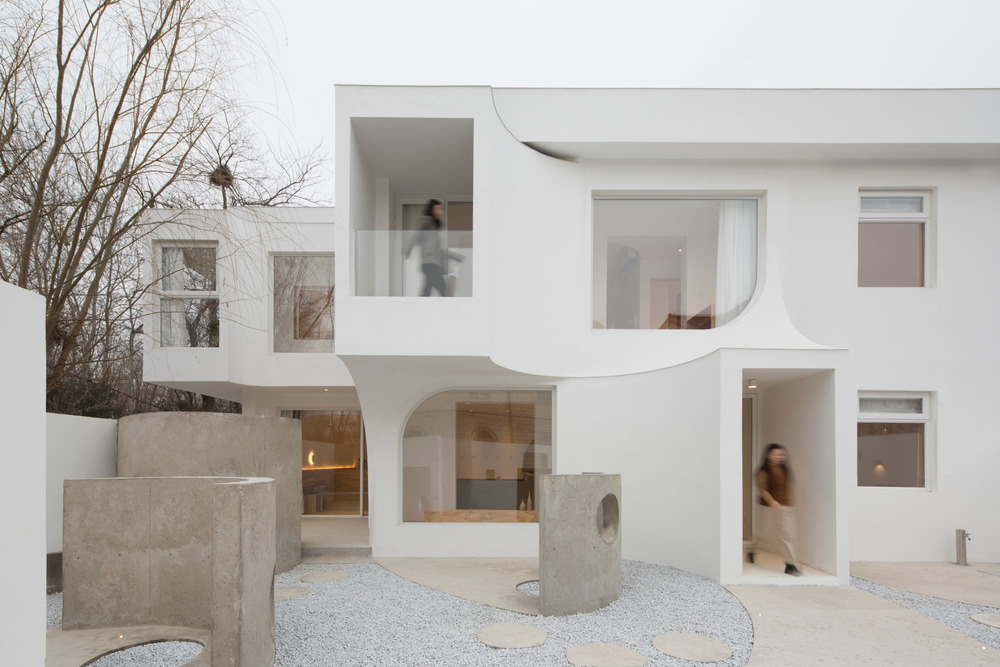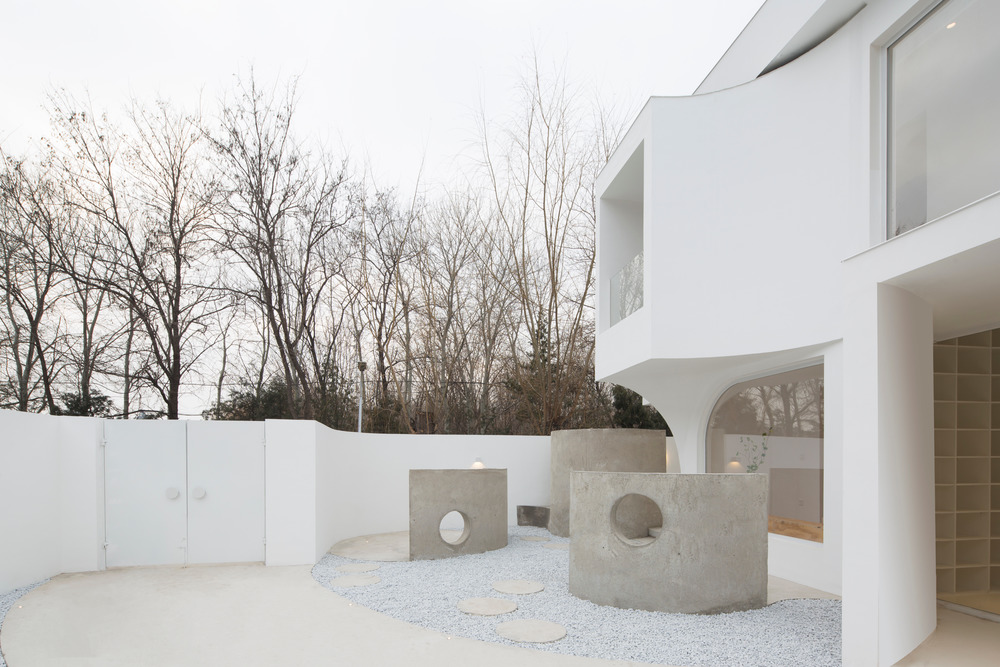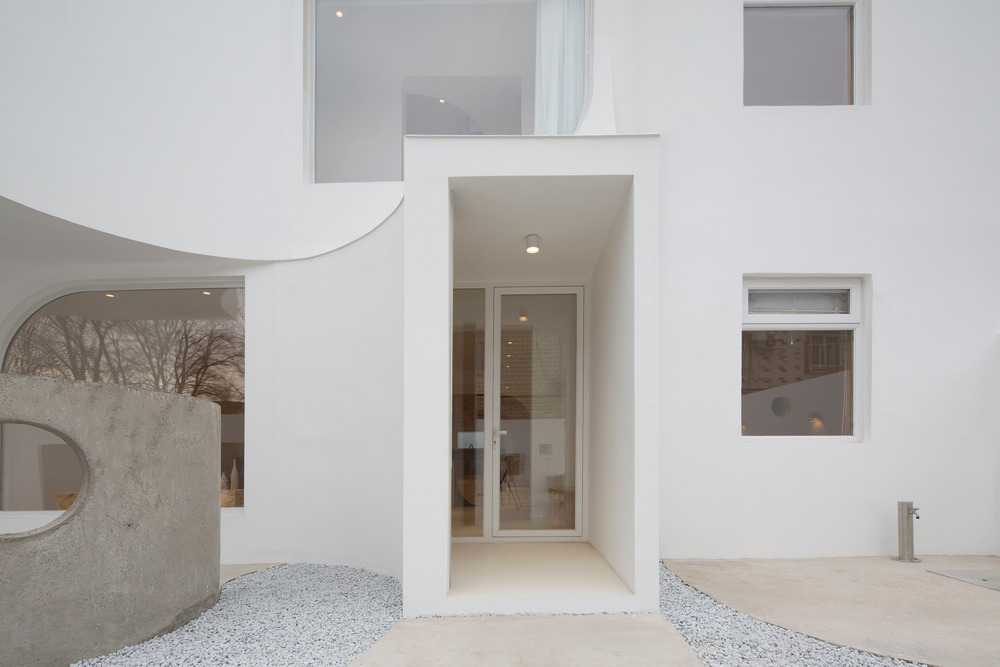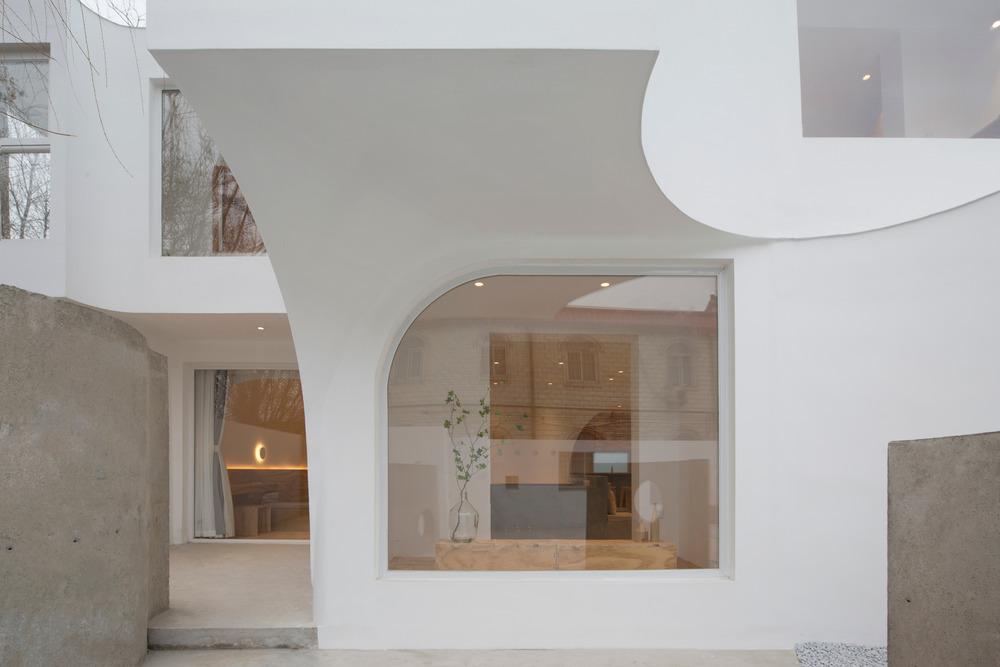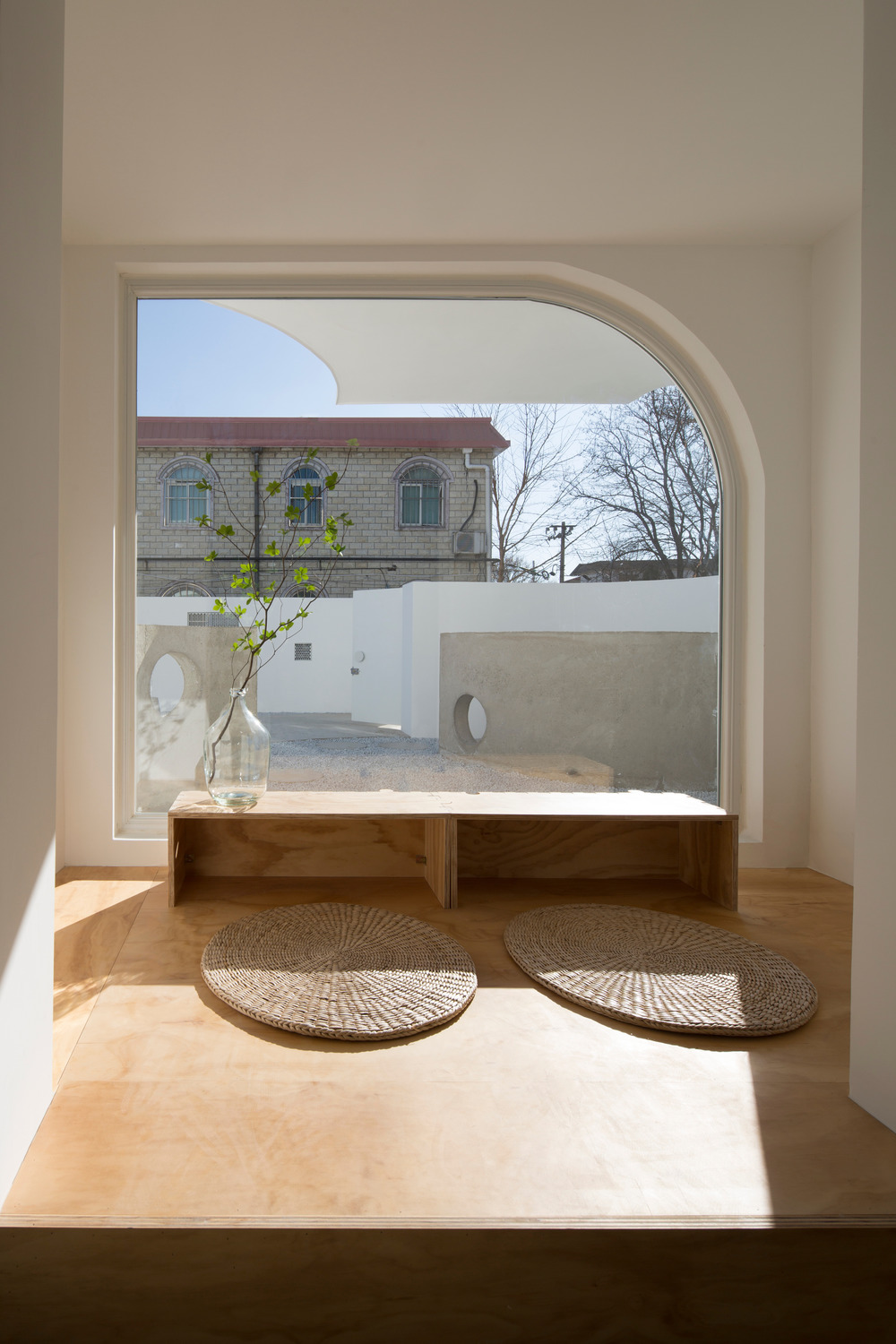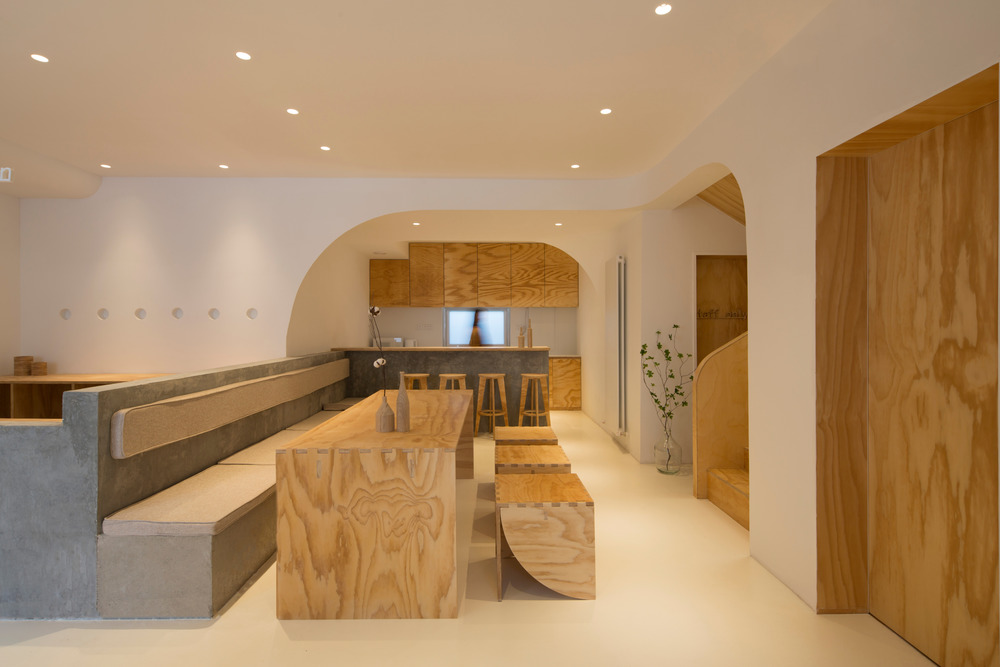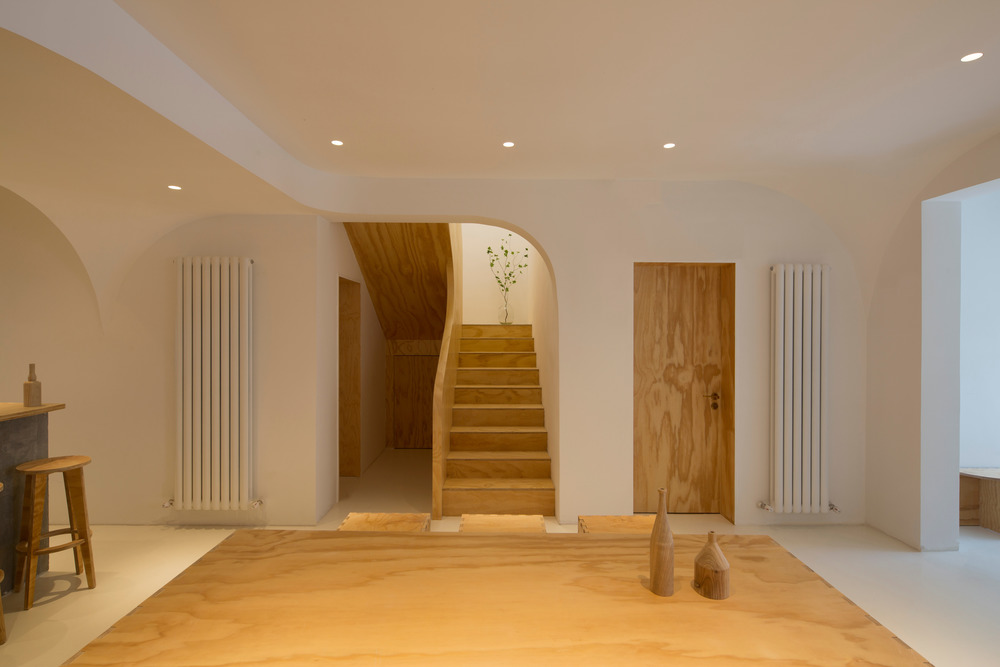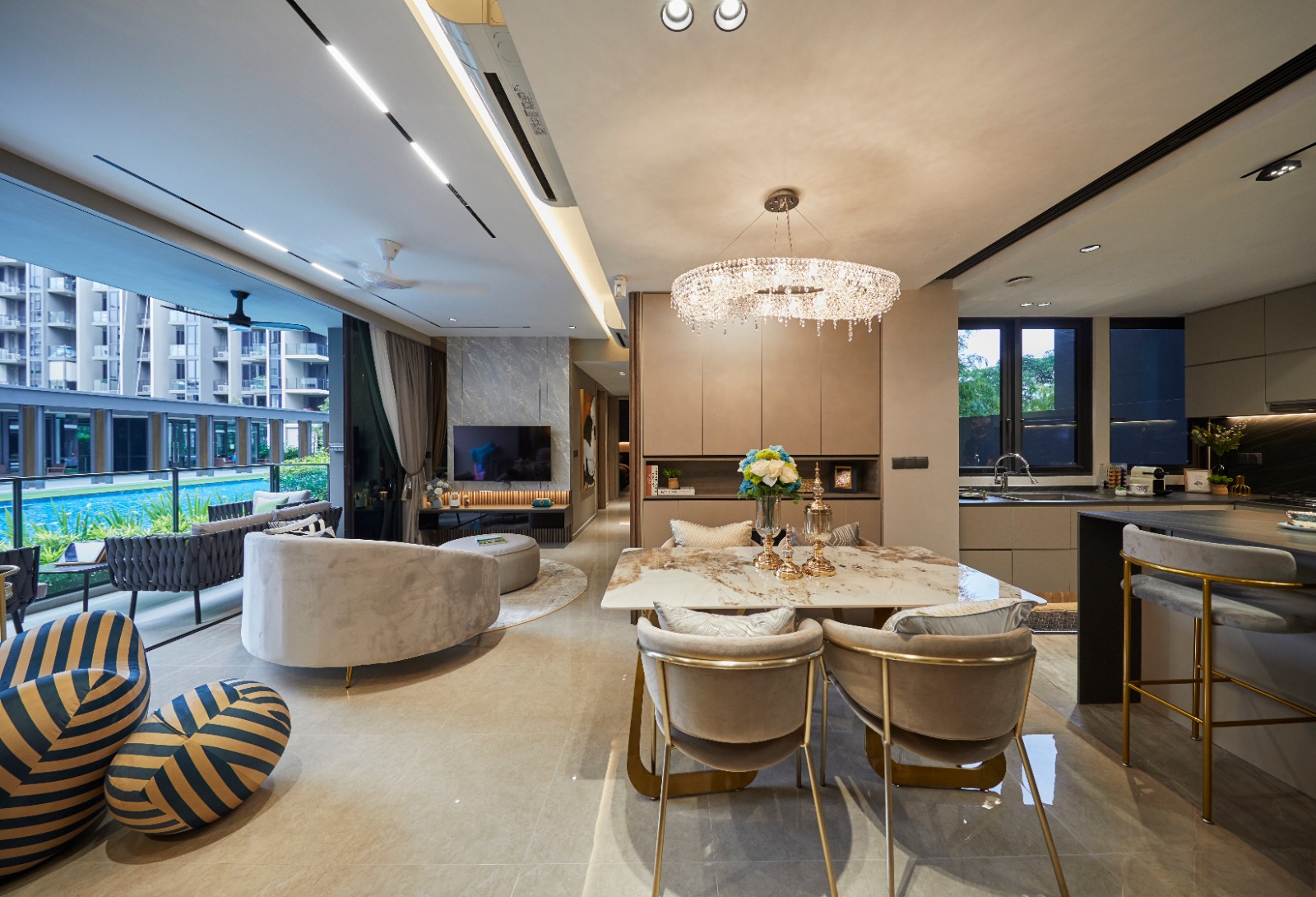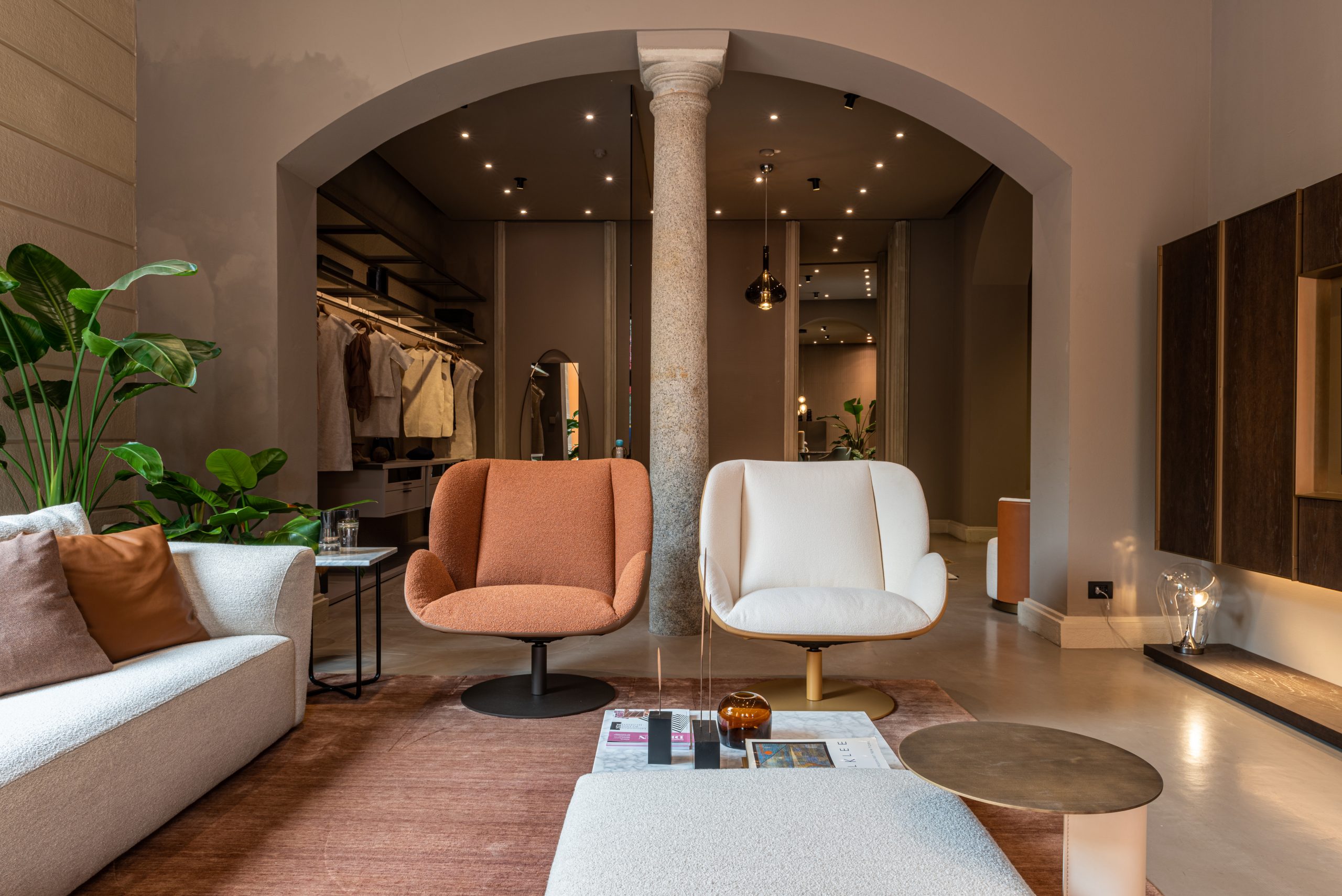Designed by Atelier d’More, this project is located in Huangmuchang Village on the outskirts of Beijing, China. It is a two-story brick-concrete building, originally used as residence and office, now beautifully transformed into a boutique hotel.
Given the lack of scenery in the surrounding environment, the designers decided to create an inward view and to create an interesting private garden, which led to the idea of the enclosed courtyard space. Only a few viewing frames are opened on the south wall. In addition to the blue sky and white clouds, the chaos and noise are isolated by the wall. The large glass windows of the building actively introduce the scenery and light into the building, which becomes a part of the indoor space experience.
- Photo credit: Atelier d’More
- Photo credit: Atelier d’More
- Photo credit: Atelier d’More
- Photo credit: Atelier d’More
The rectangular courtyard of 100 square metres is divided into several small, semi-enclosed courtyards in order to create an inner courtyard environment. Each courtyard will have a small tree as its protagonist (since completed in winter, the tree has not yet been planted), providing an organic connection between the courtyards. A series of interactions between the tearoom, guest rooms, and the courtyard are created under the multi-level space.
The architectural design language and the interior are based on a quarter arc, which flows freely in the space with a rigorous attitude and increases the tension of the building by means of geometric composition. The outward extension of the building block, on the facade, is close to nature in a flowing posture, bringing the distance between architecture, nature, and people closer together. The white facade makes the building abstract and sculptural. Through the rendering of white material, the boundary between the wall and the top is blurred. The flowing space and natural light blend to bring people a pure experience in an imaginative space.
- Photo credit: Atelier d’More
- Photo credit: Atelier d’More
- Photo credit: Atelier d’More
- Photo credit: Atelier d’More
- Photo credit: Atelier d’More
- Photo credit: Atelier d’More
- Photo credit: Atelier d’More
All of the furniture in this project was designed by Atelier d’More. In fact, the design team has been engaged in designing assembled, prefabricated furniture for many years, differing greatly from the manufacturing industry. The traditional industry automation process develops slowly, and the concept of furniture assembly is equivalent to turning on automatic gears for construction, where the clients can even operate it themselves. The design team approaches furniture assembly as a big toy, turning boring construction work into a game, in which both workers and clients can participate. Most of the interior decorations can be assembled on-site with prefabricated components. The application of this design method is very meaningful for low-cost construction projects.
Source: v2com

